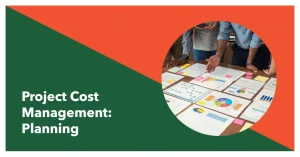To find out how Artificial Intelligence is changing the Project Management landscape, you may enjoy reading this article https://www.shaunstoltz.com/did-artificial-intelligence-just-change-everything-about-project-management/
I Introduction
Effective project management relies on clear communication, strong relationships, and teamwork. As project managers, we often find ourselves juggling various tasks, working with diverse teams, and facing tight deadlines. With so much on our plates, the importance of effective communication cannot be overstated. In fact, a study conducted by the Project Management Institute found that ineffective communication led to the failure of one-third of projects. That’s a significant statistic, and it highlights the need for mastering communication in the project management world.
The way we communicate is unique to each of us, and understanding the four types of communication styles can greatly impact the success of our projects. By adapting these communication styles, we can foster strong project communication, ensuring a seamless flow of information and collaboration among team members.
In this blog post, we’ll delve into the four types of communication styles and explore how adapting them can significantly improve our project management skills. So, let’s dive right in and start building a solid foundation for effective communication!
Stay tuned for more insights and practical tips on enhancing your project management expertise through adaptive communication styles. Together, we’ll explore the strengths and weaknesses of each style and discover how to harness their potential for better project outcomes.
II The Four Types of Communication Styles
Understanding the different communication styles is crucial to fostering strong relationships within your team and ensuring the smooth flow of information. Let’s dive into each communication style, explore their strengths and weaknesses in project management, and discuss how to adapt them for more effective project communication.
a. Passive
Characteristics: Passive communicators often avoid expressing their opinions or needs, giving priority to others’ needs and feelings. They may come across as shy or submissive, and may not assert their thoughts or ideas in group settings.
Strengths and weaknesses in project management: While passive communicators are good listeners and can create a sense of harmony in the team, they may struggle to voice their concerns or contribute to decision-making. This can lead to missed opportunities for valuable input and increased difficulty in addressing potential issues.
Tips for adapting passive style for effective project communication:
- Encourage passive communicators to share their thoughts and opinions by asking open-ended questions.
- Create a safe environment where they feel comfortable expressing themselves.
- Regularly check in with them to ensure their needs are being met and they feel heard.
b. Aggressive
Characteristics: Aggressive communicators tend to be direct, assertive, and confrontational. They may prioritize their own needs and opinions over others, often disregarding the feelings and perspectives of their teammates.
Strengths and weaknesses in project management: Aggressive communicators can be effective in driving projects forward and making quick decisions. However, their communication style may create tension and conflicts within the team, potentially leading to a negative work environment and reduced collaboration.
Tips for adapting aggressive style for effective project communication:
- Be self-aware of your tone and language, ensuring it is respectful and inclusive.
- Make a conscious effort to listen and consider the perspectives of others before making decisions.
- Encourage feedback and create opportunities for other team members to express their opinions.
c. Passive-Aggressive
Characteristics: Passive-aggressive communicators often display a mix of passive and aggressive traits. They may avoid direct confrontation but express their feelings and opinions indirectly, sometimes using sarcasm or subtle manipulation.
Strengths and weaknesses in project management: Passive-aggressive communicators can be challenging to work with, as their true intentions may be unclear. This communication style can lead to confusion, misunderstandings, and decreased trust within the team.
Tips for adapting passive-aggressive style for effective project communication:
- Practice direct, transparent communication, expressing your needs and opinions clearly.
- Address conflicts head-on and work collaboratively to resolve them.
- Seek feedback from team members to improve your communication style and foster a positive work environment.
d. Assertive
Characteristics: Assertive communicators express their opinions and needs confidently and respectfully, while also considering the feelings and perspectives of others. They strike a balance between self-assurance and empathy.
Strengths and weaknesses in project management: Assertive communicators excel in fostering a collaborative and inclusive work environment, as they are able to articulate their thoughts clearly and respectfully, while also valuing the input of their teammates. However, they may sometimes be perceived as overly dominant or intimidating.
Tips for adapting assertive style for effective project communication:
- Be mindful of your body language and tone, ensuring they convey respect and openness.
- Actively listen to others, demonstrating that you value their opinions.
- Encourage a collaborative atmosphere, giving equal importance to the contributions of all team members.
By understanding and adapting these communication styles, you’ll be well on your way to fostering strong project communication and enhancing your project management skills.
III Adapting Communication Styles for Different Team Members
Now that we’ve explored the four types of communication styles and how to adapt them, let’s discuss how we can adjust our approach to effectively communicate with different team members. After all, every team is made up of unique individuals with their own communication preferences. As project managers, it’s our job to adapt and create an environment where everyone feels heard and understood.
a. Identifying the communication style of team members
The first step is to identify the communication style of each team member. Observe how they interact with others, both in one-on-one conversations and in group settings. Take note of their body language, tone, and the way they express their opinions. Remember, people can exhibit a mix of communication styles depending on the situation, so be sure to consider various interactions to get a well-rounded understanding.
b. Adjusting your communication style to fit the needs of the team
Once you’ve identified the communication styles of your team members, adapt your approach to cater to their preferences. For example, if you’re working with a passive communicator, take the time to ask for their input and encourage them to share their thoughts. On the other hand, if you’re working with an aggressive communicator, make sure to maintain a respectful and inclusive tone while asserting your own opinions.
By adjusting your communication style, you can bridge the gap between different team members and create an environment where everyone feels comfortable contributing.
c. Building rapport and trust through effective communication
Adapting your communication style not only ensures the smooth flow of information but also helps build rapport and trust within the team. When team members feel heard and understood, they’re more likely to be open, honest, and collaborative.
Here are some tips for building rapport and trust through effective communication:
- Be genuine and empathetic, showing interest in others’ thoughts and feelings.
- Validate their perspectives, even if you don’t necessarily agree with them.
- Keep your promises and follow through on commitments, demonstrating reliability.
- Maintain open lines of communication, encouraging ongoing dialogue and feedback.
By adapting your communication style to suit the needs of your team, you’ll create a harmonious and productive work environment where everyone can thrive. Remember, effective project management is all about strong communication, and the more you practice, the better you’ll become at connecting with your team and driving your projects to success.
IV Tools and Techniques for Effective Project Communication
Mastering the art of adapting your communication style is just one piece of the puzzle when it comes to fostering effective project communication. Equally important is utilizing the right tools and techniques to facilitate seamless information flow and collaboration among team members. In this section, we’ll explore some valuable tools and techniques that can help you streamline project communication and enhance your project management skills.
a. Project management software
Project management software can be a game-changer for your team’s communication. These platforms offer a centralized space for organizing tasks, sharing files, tracking progress, and communicating in real-time. Some popular project management tools include Trello, Asana, and Basecamp. Choose a tool that aligns with your team’s needs and preferences, and encourage team members to actively engage with the platform.
b. Regular meetings and updates
Consistent meetings and updates are essential for keeping everyone on the same page and addressing any issues or concerns promptly. Schedule regular check-ins, progress meetings, and brainstorming sessions to maintain open communication channels and foster collaboration. Remember to adapt your communication style during these meetings, ensuring that all team members feel comfortable sharing their ideas and feedback.
c. Communication protocols and guidelines
Establishing clear communication protocols and guidelines can help minimize confusion and streamline information flow. For example, you might set guidelines for email communication, such as including clear subject lines, using bullet points for clarity, and specifying the expected response time. Additionally, you can establish protocols for escalation procedures, outlining when and how team members should raise concerns or report issues. By providing a framework for communication, you’ll make it easier for everyone to understand expectations and collaborate effectively.
d. Encouraging open feedback and collaboration
Creating an environment where team members feel comfortable sharing their thoughts, ideas, and feedback is crucial for effective project communication. Encourage open dialogue by actively seeking input, validating different perspectives, and addressing any concerns promptly. Foster a culture of collaboration by acknowledging team members’ contributions and celebrating successes together.
Remember, the goal is to create a supportive and inclusive environment where everyone feels heard and empowered to contribute to the project’s success. By using the right tools and techniques, and adapting your communication style, you’ll be well on your way to fostering effective project communication and boosting your project management expertise.
V Conclusion
As we wrap up our exploration of communication styles and their impact on project management, let’s take a moment to recap the importance of adapting our approach to foster strong project communication. We’ve delved into the four types of communication styles – passive, aggressive, passive-aggressive, and assertive – and discussed how adapting these styles can significantly improve our project management skills.
We’ve also explored various tools and techniques to streamline project communication, such as utilizing project management software, conducting regular meetings and updates, establishing communication protocols, and fostering a culture of open feedback and collaboration.
The journey towards mastering effective project communication doesn’t end here. It’s an ongoing process that requires continuous self-reflection, empathy, and adaptability. As project managers, we must remain committed to enhancing our communication skills and creating an environment where every team member feels heard and valued.
In doing so, we’ll not only strengthen our project management expertise but also contribute to the success of our projects and the growth of our team members. So, let’s continue to learn, adapt, and grow, pushing the boundaries of our communication skills to achieve new heights in project management excellence.
Find out more about Shaun Stoltz https://www.shaunstoltz.com/about/
This post was written by an AI and reviewed/edited by a human.



